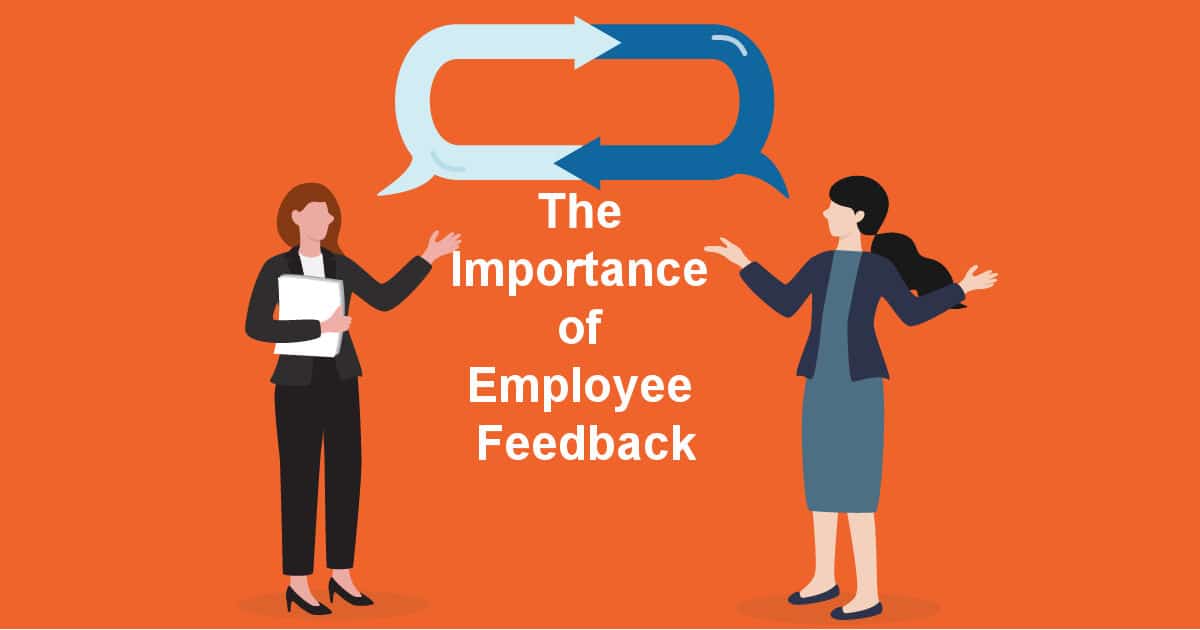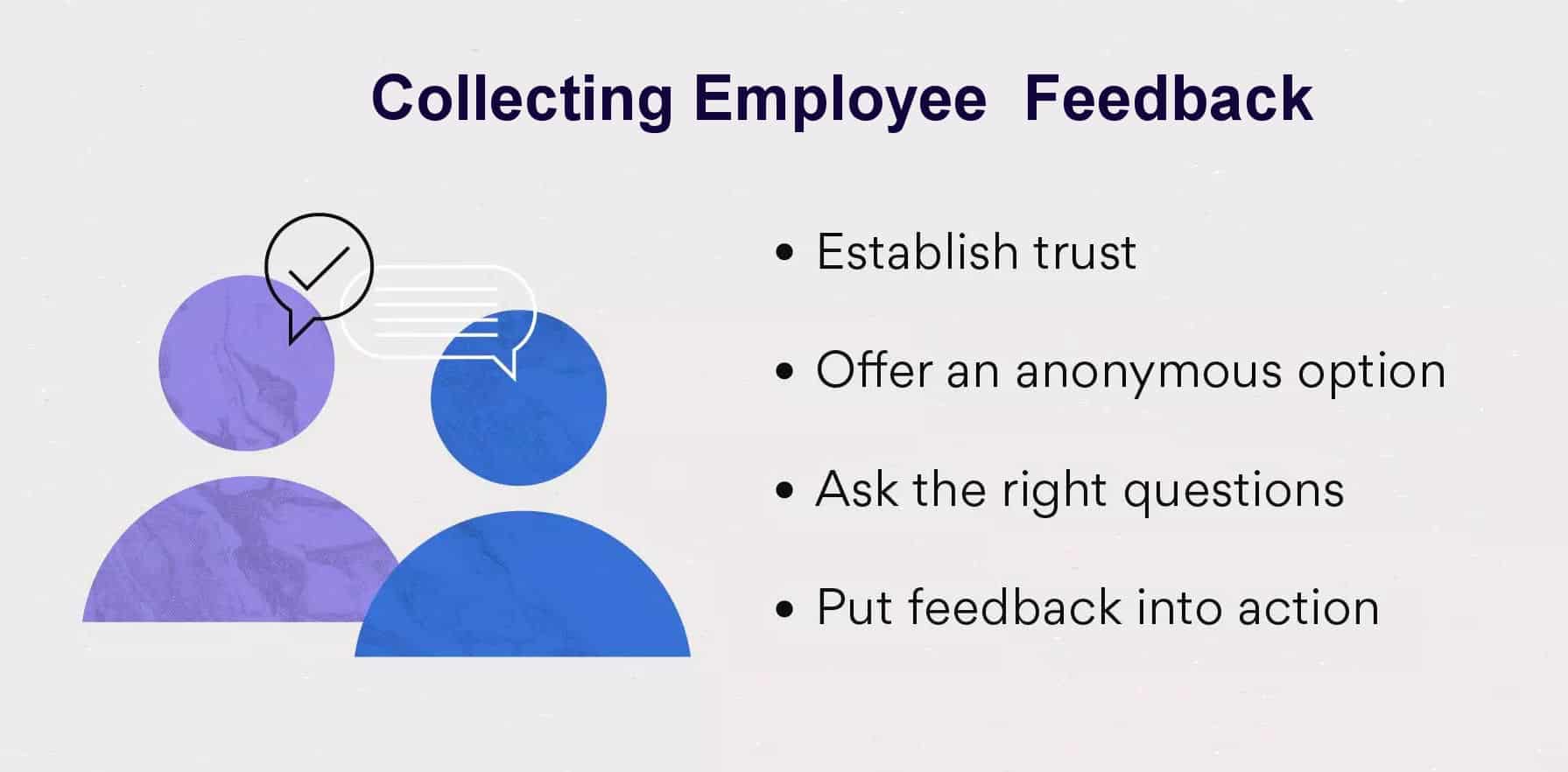Organizations must embrace employee feedback as their primary tool to develop positive workplaces that boost employee engagement in today’s quick-moving work environment.
Organizations that make an effort to understand employee sentiments create two important benefits: they discover improvement opportunities while simultaneously building trust and inclusiveness within their organization.
This post examines how employee feedback benefits organizations alongside presenting techniques for collecting feedback and building effective surveys and action plans.
Why Employee Feedback Matters
- Enhances Engagement: Employee opinions carry weight when employees believe their opinions matter thus leading to increased workplace engagement. Employees who connect with their work at an emotional level both deliver better results and become stronger promoters of their organization.
- Drives Improvement: Organizational success depends on feedback that reveals successful strategies and necessary adjustments. The continuous exchange of information allows organizations to adjust their operational frameworks and their organizational standards and work environment.
- Promotes Retention: HR professionals can prevent employee turnover by understanding employee concerns before they escalate. Organizations that implement changes based on employee feedback create environments that keep their most valuable workers.
- Fosters Innovation: The unique viewpoints that employees bring result in original answers to organizational problems. Feedback mechanisms establish open communication which enables both creativity and teamwork.
Gathering Employee Feedback
-
Implement Regular Surveys
Surveys represent an effective method of obtaining feedback from employees. Effective surveys should follow these guidelines during their development process:
-
- Surveys should remain brief while maintaining their focus on important topics because lengthy surveys will exhaust respondents and reduce their participation rates. The survey should contain precise and focused questions that concentrate on particular subjects.
- A survey must contain multiple question types including both numerical rating scales and open-ended questions to ensure complete understanding of employee perspectives.
- To ensure complete candour employees need to know that their responses will remain confidential. More sincere feedback emerges when employees feel protected by anonymity.
-
Conduct One-on-One Meetings
Manager-employee check-ins held at regular intervals enable both parties to exchange personal feedback. Surveys may not reveal all workplace issues because these problems become apparent during personal employee-manager discussions.
-
Utilize Focus Groups
Groups of employees who meet to discuss particular subjects provide organizations with meaningful understanding of their issues. The group discussion format allows participants to share their thoughts which reveals important details that standard surveys cannot detect.
-
Leverage Technology
Choose employee engagement platforms which enable feedback acquisition through features like Pulse surveys or specialized feedback software. These solutions provide analytics which help organizations monitor trends across different time periods.
Designing Effective Surveys

-
Define Clear Objectives
Create a survey only after specifying its main purpose. The assessment of job satisfaction stands alongside the examination of workplace culture and policy effectiveness as survey objectives should guide your question development.
-
Ask Actionable Questions
The way questions are phrased should result in actionable information. Instead of asking if employees are satisfied ask them which changes would enhance their satisfaction levels.
-
Use Clear and Simple Language
All survey questions should be easily understood by respondents without technical jargon. The presence of unclear language may produce incorrect interpretations that distort the survey findings.
-
Test the Survey
The survey should be tested on a small group before distribution to determine ambiguous questions and technical problems. The process allows the survey to achieve better clarity which results in more effective outcomes.
Creating Action Plans

After gathering feedback the following step should be to take appropriate action. The following steps outline how HR departments can develop successful action plans:
-
Analyze the Data
Systematically examine feedback data to discover patterns of employee issues and workplace needs which need improvement. You should use statistical data to validate your research findings.
-
Involve Employees in the Process
Employees should be actively involved in the process of creating solutions. Through employee participation in the solution development process organizations achieve better buy-in and obtain solutions that solve genuine issues.
-
Communicate Changes
After an action plan is created organizations must share the changes with their entire workforce. The practice of transparency creates trust between staff members because it shows their feedback holds real importance.
-
Monitor Progress
Multiple metrics need to be established for measuring the success of applied organizational changes. Employees should receive ongoing assessment for the effectiveness of implemented actions so changes can be made when necessary.
-
Create a Feedback Loop
A continuous feedback loop should be maintained through frequent survey repetitions and scheduled check-ins.
The continuous conversation about workplace culture strengthens employee opinion importance while supporting workplace culture maintenance.
Emphasizing a Feedback Culture
The following guidelines will help your organization properly incorporate employee feedback into its operations:
- Leadership Buy-In: The organization must have leadership commitment to develop a feedback culture. The entire organization takes direction from leaders who demonstrate open communication and who actively seek feedback.
- Training Managers: The organization should train managers to perform one-on-one meetings effectively and understand survey feedback. The training program enables a supportive atmosphere for employees to share their thoughts and concerns.
- Recognizing Contributions: The organization should recognize and celebrate successful changes that resulted from employee feedback. When employees receive recognition for their contributions it strengthens their sense of importance which leads them to stay actively engaged in feedback initiatives.
- Creating Safe Spaces: Employees need to have spaces where they can share their thoughts while being protected from workplace consequences. The organization should implement both anonymous suggestion boxes as well as casual informal meetings as safe spaces for employee input.
- Continuous Improvement: Feedback should be approached as an ongoing process instead of treating it as a single event. Your organization needs to assess its feedback process consistently because it must adapt its methods to fulfill current workforce requirements.
The Path Forward
The process of building strong feedback continues after your organization implements these strategies. Through by consistent employee feedback your organization will improve workplace culture and engagement while driving innovation and adapting to change.
Organizations that listen and respond to their workforce will become the leaders among others because of changing employee expectations.
Organizations that embrace feedback as a powerful force will see their workplaces evolve into thriving environments where employees achieve joint success.
Conclusion:
Employee feedback should function as the fundamental basis for your HR strategy because it represents an essential requirement for achieving sustainable growth.
Organizations that establish effective surveys and maintain employee engagement and implement actionable plans will develop spaces which foster trust and satisfaction and enhance productivity.
Your organization’s future development depends on the investment of employee feedback. The growth of your organization depends on the value of every employee voice because each piece of feedback creates new opportunities for improvement.
Your organization will achieve leadership status in its market through this commitment process which also advances employee satisfaction and experience.



